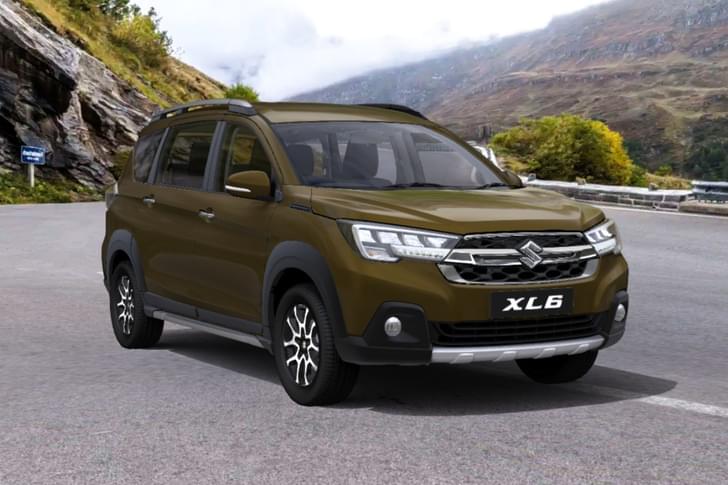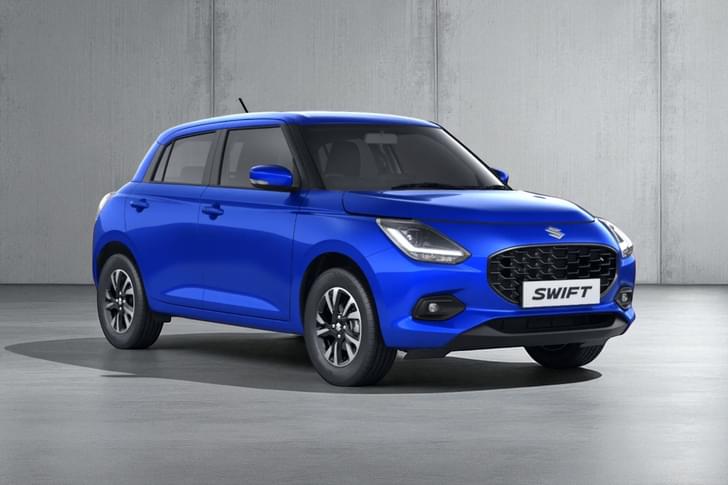Why did Maruti Suzuki spend five years and around Rs 1,000 crore designing and developing its very own diesel engine, only to withdraw it from the market within a year of its launch? It’s a nagging question that hasn’t been answered properly, at least not by the company, which abruptly stopped selling diesel cars in April 2020.
The official line from Maruti Suzuki has always been that the market for diesel cars is dwindling—the rollout of tighter BS6 emission norms in April 2020 made them much costlier, and the price gap between petrol and diesel fuels has narrowed to the point that diesel has lost its running-cost advantage. That’s all very well and sounds plausible, but it fails to answer the key question: why would any manufacturer invest all that time, effort and money to launch a brand-new, state-of-the-art diesel engine for just one year?
After all, engines are developed with long life cycles in mind, typically 15–20 years, and future-proofed to be compliant with norms. In fact, Maruti’s F-series, which had its origins in the 1980 Suzuki SS80 and powered the first Maruti 800, underwent several upgrades and ran for almost 40 years! Also, Maruti Suzuki’s drop in market share to well below 50 percent coincided with its exit from diesel in 2020.Since then, the company has operated in just 80 percent of India’s car market, which is non-diesel. For an industry leader that wants to be present in every segment and with multiple powertrains, relinquishing a fifth of the pie just like that doesn’t add up.
The truth is that Maruti Suzuki never wanted to exit the diesel market and had big plans for its all-new 1.5 turbo-diesel (E15A), which debuted in the Ciaz in March 2019.

It was after 12 years of a very successful (but expensive) partnership with Fiat (later FCA) that Maruti Suzuki decided to replace the highly popular Fiat 1.3 DDiS diesel with its own, in-house engine. The ubiquitous 1.3 diesel built under license from Fiat single-handedly made Maruti Suzuki India’s number one diesel carmaker. So why stop using it?
Sources say Suzuki Motor Corporation chairman Osamu Suzuki wasn’t happy paying high license fees to FCA and an eye-watering amount to upgrade the engine to meet BS6 norms. For Suzuki, this was an opportunity to take control of its diesel future and not be held hostage by a supplier that charges around 10 million euros to recalibrate the engine!
Maurti 1.5 diesel: Going solo
Suzuki’s first diesel engine, the humble 793cc (0.8-litre) two-cylinder (E08A), debuted in 2015 on the Celerio hatchback. But it is best forgotten. Panned for its noise and sluggish performance, the diesel Celerio was discontinued in 2017. After all, Suzuki had no history of making diesel engines, so developing one on its own wasn’t easy.
However, Suzuki wasn’t giving up. In fact, it had ambitious plans to develop a family of two-, three- and four-cylinder diesel engines to power its models. Let’s not forget that in the BS4 era (2010–2020), diesel sales were at their peak, and even for Maruti Suzuki, despite consumers perceiving it largely as a petrol car company, diesels accounted for as much as 30 percent of total sales.
When Maruti Suzuki announced its new 1.5-litre diesel for the Ciaz, we were sceptical. After all, this four-cylinder engine was essentially two Celerio diesel units forged together and downsized to 1.5 litres. However, doubts were dispelled within the first 100 metres. This lightweight 1.5 shocked us with its refinement and performance. Maruti Suzuki had thrown a lot into this engine, including a costly dual-mass flywheel to reduce vibrations. For a tight-fisted company like Maruti Suzuki to lavish so much on an engine was telling. The company was banking on the E15A for its future diesel line-up. After the Ciaz, the Ertiga got the E15A in April 2019, and it was only logical that this engine would replace the 1.3 diesel in the Brezza and power Maruti Suzuki’s (and Toyota’s) future SUVs.

But shockingly, around the same time, Maruti announced it would stop producing diesel engines by April 2020. So, what really happened?
Maruti 1.5 diesel: It's all in the head
The E15A’s cylinder head was designed with an integrated exhaust manifold, an innovation popular with new petrol engines but rarely used in diesels, and this was a cardinal mistake.
As the name suggests, an integrated exhaust manifold is a part of the cylinder head, not a separate bolt-on piece. It improves packaging and reduces weight, but the biggest benefit is that the engine’s water jacket, which is a part of the manifold, absorbs heat from the exhaust gases. As a result, exhaust gases are much cooler than in a conventional cast-iron manifold. The benefits are considerable, the most notable being a significant improvement in fuel efficiency.
How? Increased exhaust temperatures due to high engine loads can damage the catalytic converter. One way to protect it is by injecting a richer air-fuel mixture, which has a cooling effect. But this sends fuel efficiency for a toss. However, if the exhaust gases are cooled in the manifold, then there’s no need to inject more fuel into the cylinders to cool the gases. The savings in fuel efficiency can be as much as 10 percent. Volkswagen’s TSI engines have integrated exhaust manifolds for this very reason. So why not do the same for diesel engines?
The thing is, diesel engines run substantially cooler than petrol ones, and diesel exhaust gas temperatures are around 200degC lower. Hence, cooling the exhaust doesn’t give the same benefit. Look under the hood of any Hyundai, Kia, Tata or Mahindra diesel car, and you’ll notice that all their turbo-diesels come with conventional cast-iron exhaust manifolds bolted on the cylinder head.

Thus, using an integrated exhaust manifold in a diesel engine carries a risk of overcooling the exhaust gases, which can create serious complications when upgrading the engine to BS6.This was exactly the problem with the E15A, according to sources who worked on the engine’s development. But why are low exhaust gas temperatures a problem with BS6 diesels?
To move from BS4 to BS6 norms, the exhaust after-treatment hardware has to be upgraded from a Diesel Oxidation Catalyst (DOC) to a complex Diesel Particulate Filter (DPF) and DOC system. The DPF became an insurmountable problem for Suzuki engineers.
In diesel engines, unburnt hydrocarbons are emitted in gaseous form and pass through the ultra-fine channels of the DPF without a problem. However, in the E15A, the hydrocarbon emissions in the initial cold phase (below 180degC) aren’t gaseous but cooled to liquid form (because of the integrated exhaust manifold). In the liquid state, hydrocarbons can’t pass through DPF’s fine filtration; along with the soot (a noxious by-product of combustion), they get trapped in the DPF and DOC (which are in the same can).
Furthermore, during regeneration—a process of exposing the DPF to very high temperatures to burn off the soot and particulates into harmless ash—a temperature of around 1,000degC is needed, which the ceramic-based DPF substrate can withstand. However, when the trapped hydrocarbons, essentially the unburnt fuel, combust, the temperature soars to around 1,300degC—well beyond the substrate’s tolerance. That can cause hairline cracks, which can damage the DPF and DOC.
The problem of overcooled exhaust gases gets compounded in vehicles such as the Brezza, which is relatively light for the big 1.5-litre diesel. A lighter vehicle puts less load on the engine, which, as a result, runs cooler.
When Maruti Suzuki launched the E15A in BS4 form, there was no need for a DPF. So, there was no problem. But, adding a DPF to meet BS6 standards was the stumbling block. That Maruti Suzuki could make such a blunder can only be attributed to the automaker’s lack of know-how and experience with diesel technology. Sure, like other manufacturers, Maruti Suzuki uses outside consultants and experts, but sources say the base engine was already designed and developed.
Could Maruti Suzuki have redeveloped the E15A’s cylinder head to take a commonly used bolt-on exhaust manifold? The company had contemplated this, which is why there were mixed signals for a while, hinting that it could reintroduce diesels.

However, with tighter emission norms that would make diesel cars even more expensive and electrification taking centre stage, Maruti Suzuki missed the window of opportunity. There’s no point in investing crores to correct the mistakes of the E15A at this stage. The diesel boat has already sailed.
In fact, the steady decline in diesel car sales has been very fortuitous for Maruti Suzuki, which has doubled down on other powertrains and is betting on a multi-fuel (sans diesel) strategy that includes CNG, hybrids, EVs and biofuels. However, there are certain SUV segments where the majority of sales are diesel. A case in point is the Jimny, which has struggled to sell largely because it doesn’t come with a diesel option.
Also see:
2019 Maruti Suzuki Ciaz 1.5 diesel video review
Strong hybrids should replace petrol, diesel cars, not EVs: Maruti Suzuki































